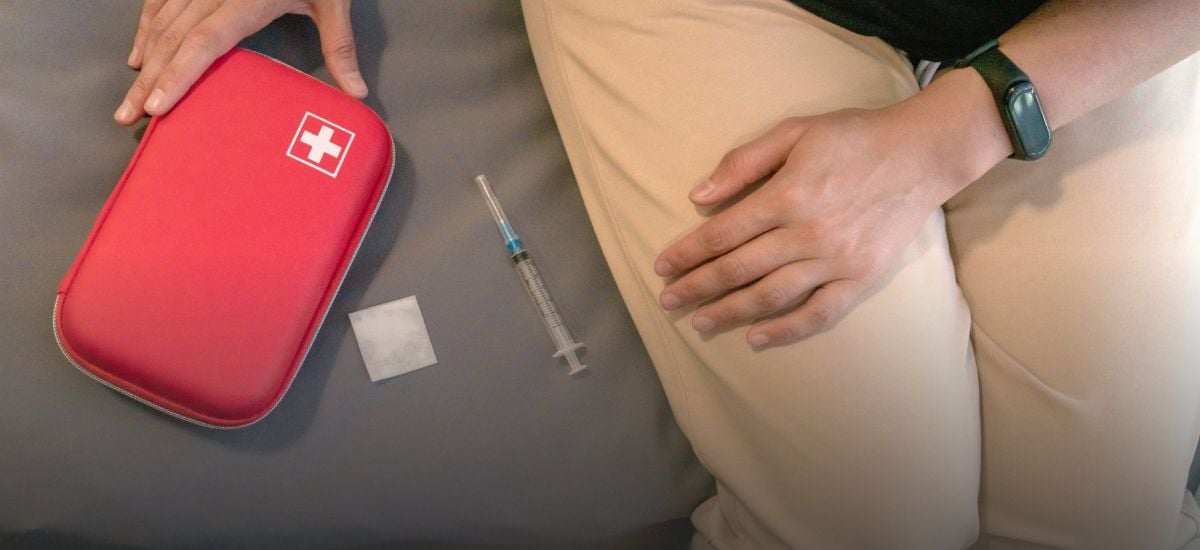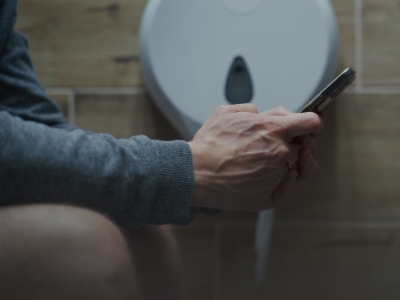Published on 19 February 2025
As you set off on your vacation, don’t let diabetes disrupt your plans. Here’s how to keep your journey smooth and free from stress.
So, you’ve scored an amazing flight deal and almost checked off your packing list. You’re all set for your holiday now, right?
Not quite – if you’re a person with diabetes, there’s one more essential item for your to-do list before you travel: scheduling a doctor’s appointment.
After all, a little preparation can go a long way in making sure your trip is all fun and no fuss.
“It is good to share your travel plans with your primary physician, who can help you prepare for the upcoming trip,” said Dr Cheah Ming Hann, Head, Jurong Polyclinic, National University Polyclinics (NUP).
“Generally, I find that awareness of preparatory measures is lacking. When I explain them to my patients, they’re often surprised but very appreciative.”
To help you prepare for your travels, here are seven essential tips from Dr Cheah and Ng Teng Fong General Hospital (NTFGH) diabetes nurses, Ms Fadilah Ahmad and Ms Nurhidah Binte Mahmud, on managing your diabetes while travelling.
1. Get vaccinated
Vaccinations are an important part of travel preparation, especially for those with diabetes.
“It’s advisable to get vaccinated before travelling, as diabetes is an immunocompromising condition,” said Dr Cheah. “Depending on your destination, there may be additional vaccinations beyond the flu jab that are recommended.”
Common vaccines to consider include the pneumococcal and hepatitis B vaccines, as well as those for typhoid, tetanus and diphtheria.
2. Account for time-zone changes
Crossing time zones can affect both insulin schedules and blood sugar levels. “In general, major adjustments are not necessary if one is crossing fewer than five time zones,” said Dr Cheah.
For example, travelling from Singapore to nearby countries like Indonesia, Japan or Australia typically involves crossing fewer than five time zones. In contrast, trips to destinations such as Europe or the United States often require crossing more than five time zones.
Regions like the Middle East and India generally fall within three to five time zones from Singapore, so only minimal adjustments may be needed for these trips.
“Travelling eastwards shortens the day and may require a reduction in long-acting insulin, whereas travelling westwards lengthens the day and may require an increase,” Dr Cheah explained. “However, this also depends on the speed of the flight, so it’s important to have your departure and arrival times on hand and consult your doctor early to plan accordingly.”
3. Make plans for meals, snacks and beverages
Crossing time zones can also disrupt meal timings, and the unpredictability of travel – such as missed or delayed flights – might result in eating much later than usual or having to settle for less-than-ideal food options.
“Research the food options at your destination and carry healthy snacks to help maintain your blood sugar levels,” advised Ms Fadilah Ahmad, Senior Nurse Clinician at NTFGH. “Stay hydrated by drinking water and sugar-free beverages.”
Changes to your regular schedule, unfamiliarity with new foods, and an “I’m on holiday” mindset can all pose challenges. “Be cautious with unfamiliar foods when trying new cuisines, and ask about ingredients when dining out,” said Ms Fadilah. “These dishes may contain hidden sugars or carbohydrates that could affect your blood sugar levels.”
“You want to avoid large swings in blood sugar,” added Dr Cheah. “So, try not to overindulge while on holiday or skip meals during long-haul flights.”
4. Travelling with blood sugar monitoring devices
Travellers should pack a blood glucose meter with extra batteries, test strips, lancets for blood testing, and glucose tablets, advised Ms Fadilah.
Travellers should also exercise extra caution when navigating airport security. “Glucose sensors can pass through airport metal detectors, but they should not be placed in an X-ray scanner,” advised Ms Nurhidah Binte Mahmud, Senior Staff Nurse at NTFGH.
Avoid passing through X-ray or full-body scanners while wearing a continuous glucose monitoring sensor or a flash glucose monitoring sensor, as these devices can be damaged. Instead, notify airport security and request a manual inspection.
5. Transport and store medications carefully
To ensure the effectiveness of your medications during your trip, proper storage is essential. According to Ms Nurhidah, glucose test strips should be stored at temperatures between 4°C and 30°C. If exposed to temperatures outside this range, they may not function accurately.
When it comes to insulin, always carry it in your hand luggage, not your checked baggage. Temperatures in the baggage hold can drop significantly, potentially freezing your insulin. Insulin needs to be kept cool but must not be allowed to freeze, as freezing can reduce its effectiveness.
“Store your insulin in an insulated cooler bag with a cold gel pack,” said Ms Nurhidah. “Wrap a towel around the gel pack to prevent direct contact with the insulin. Once you arrive at your destination, transfer the insulin to a refrigerator. Avoid leaving it in direct sunlight or a hot vehicle.”
It is also prudent to pack extra medications to cover more than just the trip duration. Include over-the-counter medications for fever, colds or diarrhoea, and label everything clearly to make passing through airport security smoother.
6. Check your feet regularly
Diabetes can cause foot issues due to nerve damage and reduced blood circulation. Numbness or a lack of sensation may prevent you from noticing cuts, blisters or sores until a serious infection develops. This risk is heightened during travel, as it often involves much more walking than usual.
“Wear comfortable, well-fitting shoes,” said Ms Fadilah. “Bring extra pairs of clean, dry socks and change them regularly. Consider wearing compression socks on long flights to improve circulation.”
“Inspect your feet daily for cuts, blisters or signs of infection, especially if you’re going on long walks or treks,” added Dr Cheah. “And avoid walking barefoot, particularly on hot sandy beaches.”
Carrying a first-aid kit with antiseptic wipes, bandages and antibiotic ointment is also a good idea for quickly cleaning and treating cuts or blisters. Keep an eye on any wounds, and seek medical attention if they show signs of poor healing.
7. Prepare for possible treatment abroad
Although unlikely, it is best to be prepared for the possibility of needing medical assistance abroad.
“Make sure your travel insurance covers diabetes and your medications,” said Ms Nurhidah. “Also, request a travel memo from your doctor confirming your diagnosis, so you can access specialised care if needed.”
Ms Fadilah also recommends obtaining prescriptions for all medications, including insulin, researching medical facilities at your destination that offer diabetes care, and keeping medical emergency contact numbers handy.
“Consider wearing a medical ID bracelet that indicates you have diabetes,” she said. “Alternatively, learn how to say, ‘I have diabetes’ in the local language of your destination.”
_1288x187px.jpg?sfvrsn=79557312_1)
In consultation with Dr Cheah Ming Hann, Head, Jurong Polyclinic, NUP; Ms Fadilah Ahmad, Senior Nurse Clinician, NTFGH; and Ms Nurhidah Binte Mahmud, Senior Staff Nurse, NTFGH.




